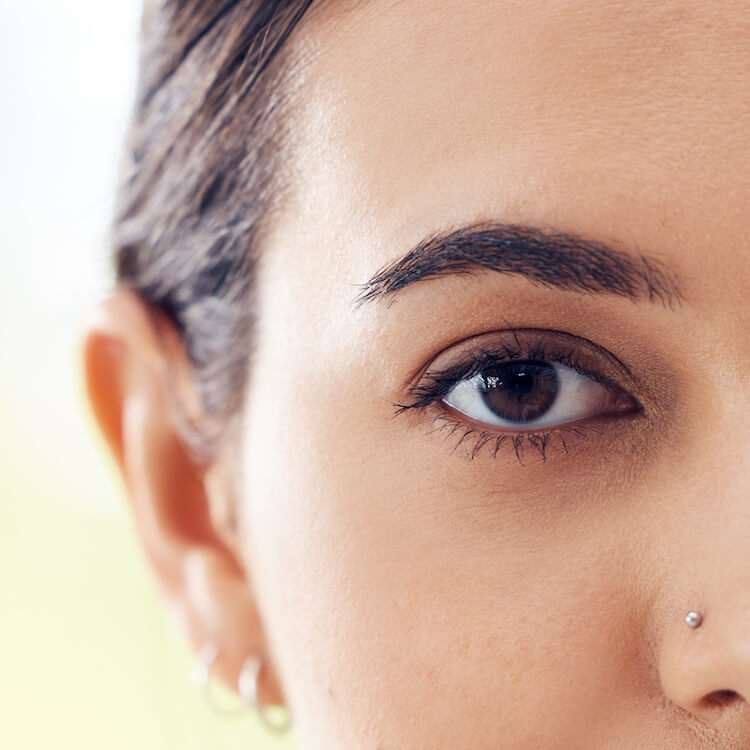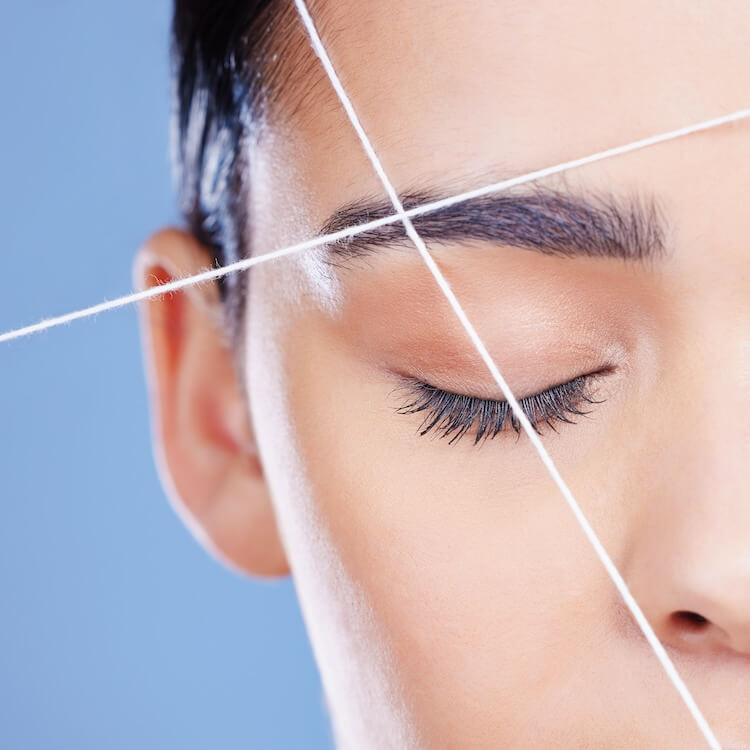Transform Your Brows: A Comprehensive Guide to Eyebrow Transplant Surgery
For many, eyebrows play a crucial role in defining facial features and expressing emotions. Over the years, the demand for fuller, natural-looking brows has skyrocketed, driven by beauty trends and the desire for a permanent solution to thinning or sparse eyebrows.
An eyebrow hair transplant procedure is a minimally invasive in-office surgery that lasts between 3 to 5 hours and is typically performed under local anesthesia.
While makeup and microblading offer temporary fixes, they often require constant upkeep. An eyebrow transplant, however, offers a long-lasting solution by using your own hair to create fuller, natural brows that enhance your overall appearance.
If you’re tired of filling in your eyebrows every day or dealing with thinning eyebrows, an eyebrow transplant may be the perfect option for you. This guide will walk you through everything you need to know about eyebrow transplants, from the procedure itself to the recovery process.
What is an Eyebrow Transplant?
An eyebrow transplant is a cosmetic procedure designed to restore or create fuller, natural eyebrows using hair from another part of your body. This is typically done by transplanting hair follicles, usually from the scalp, into the eyebrow area.
The eyebrow hair transplant procedure is a minimally invasive in-office surgery that lasts between 3 to 5 hours and is typically performed under local anesthesia. The procedure ensures that the newly transplanted hair grows naturally and blends seamlessly with the rest of your eyebrow hair.
The eyebrow transplant procedure is often performed using a method called follicular unit extraction (FUE), where individual hair follicles are extracted and then transplanted into the desired brow shape. This method allows for precise placement, ensuring that each hair follows the natural shape and desired direction of your brows.

Unlike temporary fixes like eyebrow pencils or tattoos, an eyebrow transplant offers a permanent solution. It’s perfect for those who suffer from hair loss due to over-plucking, aging, or medical conditions such as alopecia universalis.
Why Consider Eyebrow Transplant Surgery?
For those seeking a long-term solution to thinning eyebrows, eyebrow transplant surgery can be life-changing. While makeup and microblading offer temporary fixes, they lack the longevity of an eyebrow hair transplant.
The eyebrow hair transplant procedure is performed under local anesthesia, allowing patients to engage in relaxing activities during the session.
With a transplant, you’ll achieve natural appearing eyebrows that won’t fade or require daily maintenance. This procedure is ideal for those dealing with permanent hair loss from conditions such as alopecia or those who naturally have thin eyebrows.
The transplanted hairs grow just like your natural hair, giving you the freedom to style them in your desired shape.
Additionally, an eyebrow transplant is a permanent solution that provides fuller eyebrows, perfect for enhancing your facial features. The new eyebrows will grow naturally, allowing you to trim and maintain them just like your original ones, making it a long-lasting option for those who want full brows without the hassle.
How Eyebrow Transplantation Works

The eyebrow transplantation process is precise and tailored to create natural-looking results. During the procedure, a cosmetic surgeon extracts hair follicles from a donor area—typically the scalp. These hair grafts are then meticulously implanted into the eyebrow area, following the natural growth pattern to ensure that the newly transplanted hair blends seamlessly with the existing eyebrow hair.
The eyebrow hair transplant procedure begins with local anesthesia to numb both the donor area and the brows, making the surgery comfortable and pain-free. The surgeon carefully places each hair graft to match your natural shape, ensuring the newly transplanted hairs grow in the correct direction and position. This precision allows for a highly personalized result, tailored to your face.
A successful eyebrow hair transplant offers a permanent solution to thinning eyebrows or hair loss, giving you the freedom to enjoy your new, full brows without the need for makeup or other temporary fixes.
Types of Candidates for Eyebrow Transplant
An eyebrow transplant is ideal for a variety of people. Those with naturally thin eyebrows due to genetics, over-plucking, or aging are perfect candidates for this procedure. It also serves individuals dealing with thinning eyebrows from conditions such as alopecia universalis or other medical conditions that cause hair loss. People experiencing permanent hair loss in their eyebrows—whether from trauma, burns, or surgery—can greatly benefit from eyebrow transplantation.
The procedure provides a full restoration of your brows, giving you a natural, fuller look. If you're someone who desires fuller eyebrows or has tried other methods like microblading with unsatisfactory results, eyebrow hair transplantation may be the right choice. It's also ideal for individuals seeking natural brows that can be styled just like regular eyebrow hair.
Eyebrow Transplant Consultation: What to Expect
Before undergoing an eyebrow transplant, an eyebrow transplant consultation with a plastic surgeon is essential. During this meeting, your medical history will be reviewed, and you'll discuss your realistic expectations for the surgery. The surgeon will assess your eyebrow shape and determine the best approach to achieve your desired natural brows.
At this stage, the surgeon will explain the potential costs, including the transplant cost and any additional expenses such as follow-up appointments or a potential touch up procedure. Many patients may require a touch up to refine their desired results after the initial surgery. This consultation is crucial to ensure you have a clear understanding of the total cost, procedure, and recovery time.
The Recovery Process After Eyebrow Transplants
After an eyebrow transplant, the healing process is typically smooth, but it requires proper care. Immediately following the procedure, the transplanted hair follicles will need time to settle, and the area may appear slightly swollen. Using a mild soap to gently cleanse the area is recommended to avoid irritation. Within several weeks, the new hair growth will begin, though it may take a few months for full results.
During recovery, it's essential to follow your surgeon’s instructions closely. The initial healing will take about 7-10 days, but the new eyebrows will continue to develop for several months. The eyebrow area will eventually look fully healed, and your new hair will begin to grow in naturally, giving you the natural hair you’ve always desired.
The recovery time is manageable, and there is usually minimal discomfort, thanks to the use of local anesthesia during the procedure. Unlike some other surgeries, an eyebrow transplant does not leave a linear scar, as modern techniques such as FUE technique are used, ensuring a smooth recovery.
Eyebrow Transplant Cost and Factors That Influence It
The eyebrow transplant cost can vary based on several factors, including the number of hair grafts required, the experience of your plastic surgeon, and the complexity of the procedure.
On average, the total cost can range from $3,000 to $6,000, depending on the specific needs of the patient. Factors such as the size of the eyebrow area, the density of hair needed for full restoration, and any post-surgery touch ups can also affect the transplant cost.
It’s important to discuss all potential costs during your consultation to ensure there are no surprises. While the upfront cost may seem significant, many patients consider the investment worthwhile for the permanent solution it offers compared to temporary alternatives like makeup or microblading.
Common Questions About Eyebrow Transplant
How long do eyebrow transplants last?
An eyebrow transplant is a permanent solution. Once the new hair begins to grow, it will continue to grow like normal hair. The longevity of the results makes it an attractive option for those who want natural-looking results that don't fade over time. Many people experience new hair growth within a few months, and by six to eight months, full brows have typically been restored.
Are there risks or downsides?
Like any cosmetic procedure, there are potential risks with eyebrow surgery. Some individuals may experience minor side effects such as swelling or redness, but these typically subside during the healing process.
Since the surgery involves transferring hair from a donor area, there is no risk of rejection, making it a relatively safe procedure. However, there is always a small risk of infection or scarring, though modern techniques like FUE minimize the chance of a linear scar.
Can medical conditions affect the results?
Yes, certain medical conditions such as alopecia universalis or other types of hair loss may affect the outcome. It's essential to discuss any medical history with your plastic surgeon during the consultation. Those with underlying conditions may require additional care or a touch up session to achieve their desired results.
How much hair is needed for the transplant?
The number of hair grafts needed depends on the individual and the desired fullness of the brows. For most patients, anywhere between 200-400 hair follicles are transplanted. This ensures that the natural hair looks even and full, providing a natural appearance.
How Long is the Recovery Time After an Eyebrow Transplant?
The recovery time following an eyebrow transplant is generally quick, with most patients returning to their normal activities within a week.
Initially, you may experience some redness or mild swelling in the eyebrow area, but this typically fades within a few days. The first few weeks are crucial for the new hair growth, as the transplanted follicles begin to establish themselves.
After about a month, you’ll start to notice hair growing in the transplanted area. Full recovery, including the regrowth of new hair, can take several months, but the result is worth the wait. By the end of the process, the eyebrow restoration will give you the full brows you’ve always desired.
The Role of Hair Follicles in Eyebrow Transplants
The success of an eyebrow transplant hinges on the health and quality of the hair follicles. Each hair follicle is carefully extracted from a donor area, often the scalp, and transplanted into the brow area.
These hair follicles are responsible for hair regrowth, and when transplanted, they continue to produce hair as they would in their original location.
The precision involved in placing each hair follicle ensures that the brows maintain a natural appearance and grow in the correct direction. The transplanted hairs will grow like normal, needing trimming and maintenance, just like your original brows.
Is General Anesthesia Required for Eyebrow Transplant Surgery?
No, an eyebrow transplant typically requires only local anesthesia, making it a relatively low-risk procedure compared to surgeries requiring general anesthesia.
The use of local anesthesia numbs both the donor area and the brow region, allowing the procedure to be performed without discomfort. This type of anesthesia ensures a quick recovery and allows patients to return home the same day.
Does an Eyebrow Transplant Help With Hair Restoration?
Yes, an eyebrow transplant is a form of hair restoration specifically focused on the eyebrows. For individuals who experience hair loss due to over-plucking, aging, or medical conditions, this procedure offers a permanent solution.
It’s especially effective for those who have thinning eyebrows or have completely lost their brows due to conditions like alopecia universalis.
Do You Need a Touch-Up After Eyebrow Transplant Surgery?
Some patients may require a touch up session a few months after the initial transplant to perfect their desired results. In some cases, not all of the transplanted hair follicles take root, or additional fullness is needed. A touch up ensures that your brows have the fullness and shape you desire. This step is typically minor compared to the original procedure.
What Results Can You Expect After Eyebrow Surgery?
The goal of an eyebrow transplant is to provide natural-looking results that enhance your facial features. By the end of the healing process, your brows will look and feel like natural eyebrows.
The transplanted hairs will grow in the same way as normal eyebrow hair, allowing you to trim and style them as needed. After the surgery, most patients achieve a full, natural appearance, with new hair growth becoming visible within a few months.
Is There a Risk of Scarring?
Modern eyebrow transplants, especially those using the FUE technique, do not leave a linear scar. Instead, the donor area heals with minimal visible scarring, making this a more attractive option than older methods of hair transplantation. This ensures that both the donor area and the eyebrow area heal smoothly, without noticeable marks.
Benefits of Eyebrow Transplants
Eyebrow transplants offer numerous benefits for individuals seeking to restore or enhance their natural eyebrow appearance. Some of the key advantages of eyebrow transplants include:
- Permanent Results: Unlike temporary solutions like makeup or tattooing, eyebrow transplants provide long-lasting results that can last a lifetime. Once the transplanted hair follicles take root, they continue to grow naturally, offering a permanent solution to thinning or sparse brows.
- Natural Appearance: When performed by a skilled surgeon, eyebrow transplants can create a natural-looking brow that complements your facial features. The precision involved in placing each hair follicle ensures that the new brow hairs grow in the correct direction and blend seamlessly with your existing eyebrow hair.
- Improved Self-Confidence: Thicker, fuller eyebrows can greatly enhance your self-esteem and confidence, allowing you to feel more comfortable in your own skin. Many individuals find that their new brows make them look more youthful and expressive.
- Reduced Maintenance: With a successful eyebrow transplant, you can say goodbye to daily eyebrow maintenance, such as filling in sparse areas with makeup or pencils. The transplanted hairs grow like normal eyebrow hair, requiring only occasional trimming and grooming.
- Versatility: Eyebrow transplants can be customized to suit your individual preferences, whether it’s to create a fuller brow, reshape the existing brow, or restore lost hair due to medical conditions or trauma. This versatility allows for a highly personalized result that meets your specific aesthetic goals.
Choosing the Right Surgeon
Selecting the right surgeon for an eyebrow transplant is crucial to achieving optimal results. When searching for a qualified surgeon, consider the following factors:
- Experience: Look for a surgeon with extensive experience in performing eyebrow transplants and hair restoration procedures. An experienced surgeon will have a deep understanding of the nuances involved in creating natural-looking brows.
- Credentials: Ensure the surgeon is board-certified in plastic surgery or a related field and has the necessary qualifications to perform the procedure. Board certification indicates that the surgeon has met rigorous standards of training and expertise.
- Reviews and Testimonials: Research the surgeon’s reputation by reading reviews and testimonials from previous patients. Positive feedback from satisfied patients can provide valuable insight into the surgeon’s skill and patient care.
- Consultation: Schedule a consultation with the surgeon to discuss your goals, expectations, and any concerns you may have. A thorough consultation allows you to assess the surgeon’s approach and ensure they understand your desired outcome.
- Facility: Ensure the surgical facility is accredited and equipped with the latest technology and equipment. A well-equipped facility can enhance the safety and success of the procedure.
Before and After Photos
Viewing before and after photos of eyebrow transplant procedures can provide valuable insight into the potential results of the surgery. When reviewing photos, consider the following:
- Look for Natural-Looking Results: A successful eyebrow transplant should create a natural-looking brow that complements the individual’s facial features. The transplanted hairs should blend seamlessly with the existing eyebrow hair, following the natural growth pattern.
- Pay Attention to Hair Growth: Notice the direction and growth pattern of the transplanted hair, ensuring it looks natural and healthy. The precision in placing each hair follicle is crucial for achieving a realistic appearance.
- Evaluate the Surgeon’s Skill: Assess the surgeon’s attention to detail and ability to create a balanced, symmetrical brow. The photos should demonstrate the surgeon’s expertise in achieving aesthetically pleasing results.
- Consider the Individual’s Features: Take note of the individual’s facial structure, skin tone, and hair color to ensure the results are tailored to their unique features. This personalization is key to achieving a harmonious and natural look.
By carefully evaluating before and after photos, you can gain a better understanding of what to expect from an eyebrow transplant procedure and make an informed decision about your treatment.
Is an Eyebrow Transplant Right for You?
If you’re struggling with thinning eyebrows or have lost your brows due to aging, genetics, or medical conditions, an eyebrow transplant could be the right solution for you.
This procedure offers a permanent solution to eyebrow loss, providing fuller eyebrows that look completely natural. With a relatively quick recovery time and minimal risk, it’s a worthwhile option for anyone looking to enhance their facial features.
For more information, be sure to visit our eyebrow transplant landing page to schedule a consultation with a plastic surgeon.
